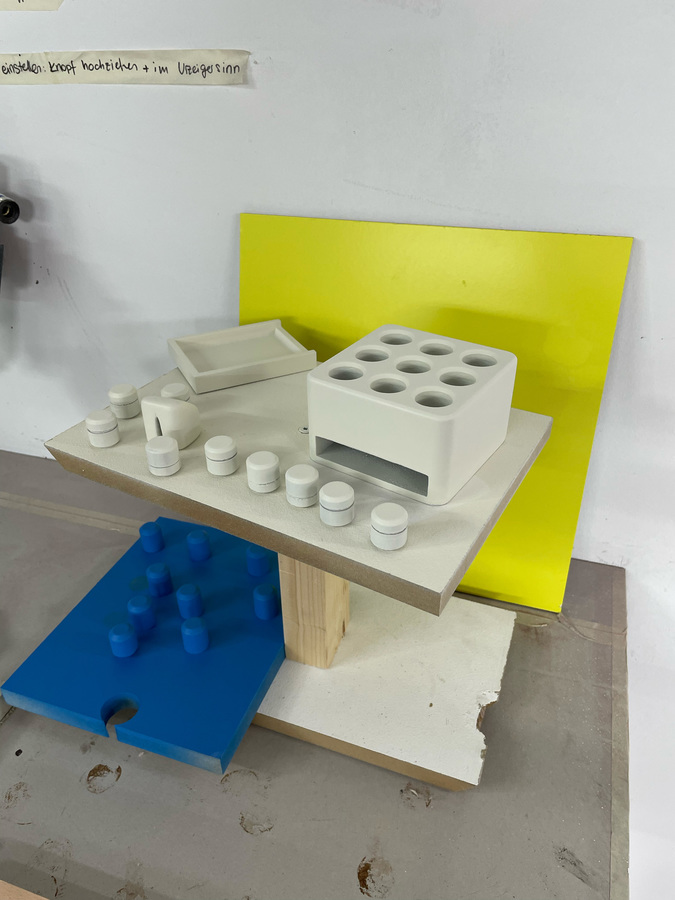
Kosar Kazemi
Future of Diagnostics and Laboratory in 2050
Speculative Design
Studium: MA Masterstudio Industrial Design
Jahr: 2024
Credits: Bannerbild von Camilla Fivian
This project, conducted in collaboration with Roche, investigates the future of diagnostics and laboratories in 2050. Despite rapid technological progress, the slow adoption of advancements in the In Vitro Diagnostics (IVD) industry hinders its ability to meet future demands. This research addresses this critical gap by providing future design guidelines aimed at fostering a patient-centered healthcare future.
The project began with an in-depth understanding of Roche’s departments and the IVD industry, including tests, labs, personnel, devices, and current journey maps and process. Data was collected through interviews with Roche employees and observations at the FHNW university research lab and Roche’s internal labs. Chapter 3 details the current state of the IVD industry. Chapter 4 explores future trends, signals, facts, and variables that will shape the industry in 2050. Using speculative design tools like scenario planning. Chapter 5 develops four scenarios based on this research. A SWOT analysis identifies strengths, weaknesses, opportunities, and threats of each scenario, guiding us toward the most desirable future. In Chapter 6, the project results in two key scenarios based on the desirable scenario created in the previous chapter: managing data to build trust and provide equal healthcare access with centralized service management, and decentralized management. These two scenarios emphasize privacy, access, and managemet. Additionally, artifacts were designed to illustrate these scenarios and their potential opportunities.
Finally, the research aims to design a desirable future and also creating a roadmap to achieve it. A workshop with experts was conducted to evaluate and refine the envisioned future for patients in 2050. In this workshop with the help of backcasting a roadmap was created to achieve this desirable future.

